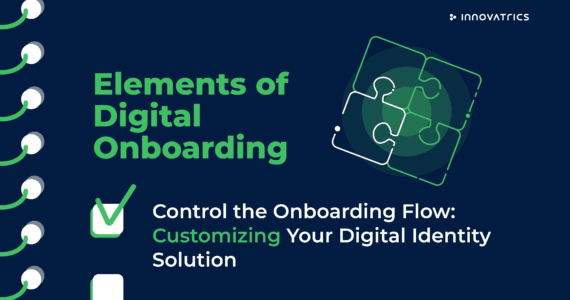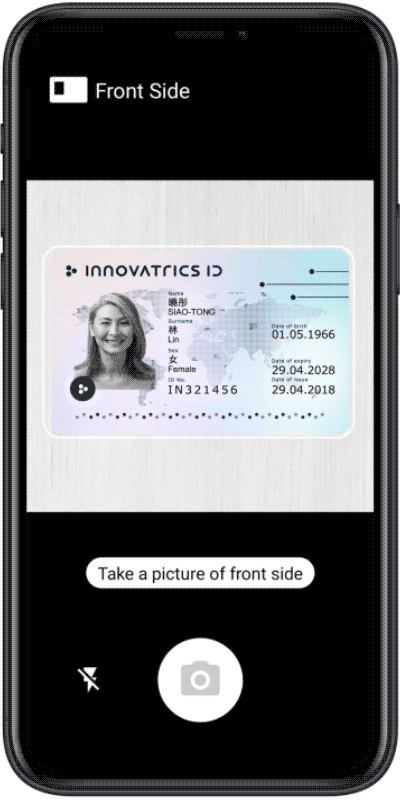

Control the Onboarding Flow: Customizing Your Digital Identity Solution
This is a part of the series about remote identity verification solutions and how to successfully integrate them ...
Read moreIn an era where digital transactions are skyrocketing, the risk of identity theft and document fraud is booming. This is where Optical Character Recognition technology (OCR) steps in as a game-changer. OCR allows the conversion of printed text into a machine-readable and analysable format. It has the ability to store, edit, and search text electronically, helping organizations with identity verification and fraud detection.
Optical Character Recognition technology plays a key part in the identity verification process. OCR is essential for quickly and accurately extracting text from ID cards, passports, driver’s licenses, and other documents. By converting the text from scanned images into machine-readable text, OCR enables systems to capture essential details such as name, birth date, and document number with minimal user input.
Powered by advanced algorithms, OCR streamlines the process of digitizing documents. It enhances efficiency and productivity for individuals and organizations, freeing up time and resources for more critical tasks.


OCR is used to verify the authenticity of submitted documents and compare them with reference templates or databases. It works by scanning the image of a document and turning the visual text into a digital format that a computer system can understand and read.
For example, when a bank verifies a new customer’s driver’s license, OCR scans and reads the license details like name, date of birth, and address. The system then cross-references that information with official databases. If there’s a mismatch, the system shows red flags and the document needs further review.
However, OCR’s effectiveness depends on several factors:
Integration with Databases: OCR outputs are cross-referenced with government or business databases to validate the extracted information, ensuring that the data corresponds to existing records.
Find out more on how Innovatrics OCR technology has helped the Thai government fight identity fraud.
Implementing Optical Character Recognition (OCR) with proper security measures can greatly enhance data protection. Below is a closer look at how OCR safeguards sensitive information and improves everyday operations:
OCR reduces the need for manual data entry, meaning fewer people handle confidential documents. With less human interaction, there’s a lower chance of errors or unauthorized access, helping keep sensitive data secure.
Many OCR systems let you set up user authentication and role-based permissions. This ensures that only authorized team members can view or edit important files, reducing the risk of data leaks.
Whether you need to follow GDPR or other data protection rules, OCR can help. By securely digitizing and organizing information, it reduces the likelihood of legal issues and potential fines for non-compliance.
By converting files into searchable digital formats, OCR makes it safer and simpler to share documents across teams or departments. This minimizes the need to handle physical papers, reducing the risk of documents being misplaced, lost, or accessed by unauthorized individuals.


There is a critical aspect of remote identity verification which is detecting anomalies on ID cards. Anomalies can include tampered data, inconsistent fonts and languages, or even counterfeit IDs. Sophisticated verification systems employ advanced techniques to detect these irregularities.
AI-driven systems can compare ID card patterns against known templates, identifying discrepancies in design or format. Many modern ID cards include security features like microprinting and holograms that are difficult to replicate. Verification systems can detect these elements and flag any missing or altered features.
ID cards often include barcodes or QR codes that contain encrypted data. Anomaly detection systems can scan and validate these codes to ensure they haven’t been tampered with. Modern verification systems are now capable of analyzing an ID’s surface for signs of tampering, such as scratches, glue residue, or inconsistent textures. These may indicate attempts to alter the document.
Detecting anomalies is crucial for preventing fraudulent activities, especially in high-security sectors like banking and government services. By catching these irregularities early, businesses can mitigate risks and protect their customers from identity theft.
In the era of digitalization, banks and financial institutions rely on OCR technology to help them in various document-intensive tasks, such as opening new accounts, verifying credit applications, processing loan documents, and improving the overall user experience of their customers.
When customers apply for credit cards or loans, banks typically require a host of documents like pay stubs, proof of identity, and address verification. Instead of manually entering every piece of data, OCR software extracts the relevant information—such as the applicant’s name, date of birth, and employment details—within seconds.
With this process, customer retention and satisfaction can increase by up to 70%. Also, in the first year after deployment, 30% of all new accounts and 50% of student accounts were opened fully remotely.
Another significant advantage of OCR in banking and financial services is its ability to compare extracted data with authoritative databases (like government ID databases or tax records). Any inconsistencies—such as a mismatch in the ID number or a discrepancy in the reported income—are flagged instantly for further review.
Innovatrics’ identity verification process has helped one of the biggest commercial banks in Slovakia, Tatra Banka, to onboard their customers in just two minutes and cross-check their data from the authoritative databases within seconds. You can read the full case study here.
OCR can make banking services more accessible and transparent. In this environment, OCR technology helps reduce manual errors, cut processing costs, and speed up customer onboarding—all while ensuring regulatory compliance.